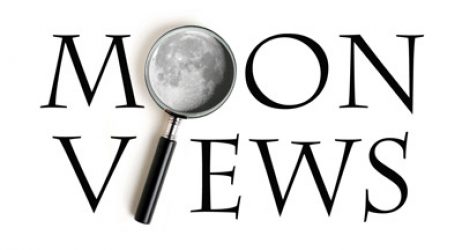NIMBUS: Recovering the Past
 Dumpster Diving for Science
Dumpster Diving for Science
“Last month, researchers working out of an abandoned McDonald’s restaurant on the grounds of NASA Ames Research Center recovered data collected by NASA’s Nimbus II satellite on 23 September 1966. The satellite soared over Earth in a polar orbit every 108 minutes, taking pictures of cloud cover and measuring heat radiated from the planet’s surface, and creating a photo mosaic of the globe 43 years ago. The resulting image is the oldest and most detailed from NASA’s Earth-observing satellites. It’s also the latest success story in what researchers call techno-archaeology: pulling data from archaic storage systems. Once forgotten and largely unreadable with modern equipment, old data tapes are providing researchers with new information on changes in the surfaces of Earth and the moon…”
 Nimbus II and Lunar Orbiter 1 Imagery: A New Look at Earth in 1966
Nimbus II and Lunar Orbiter 1 Imagery: A New Look at Earth in 1966
“The LOIRP required a lot of what has come to be called “techoarchaeology” that is, going back in time to the original data and recording devices, using modern enhancements. The expertise gained by the LOIRP team eventually caught the attention of the folks at the National Snow and Ice Data Center (NSIDC). Data from the Nimbus weather and earth observation satellite – in orbit at the same time as the Lunar Orbiters were circling the Moon – had languished for years in the national archives until John Moses NASA Goddard Space Flight Center had them digitized. Dr. Walt Meir of the National Snow and Ice Data Center, after seeing the work that the LOIRP team had done in potentially identifying the Antarctic sea ice in the Lunar Orbiter 1 Earthrise image, and recognizing the similarity between the raw data of the Nimbus and Lunar Orbiter data, provided a grant to the LOIRP team to process the Nimbus data into a modern format and to correct image artifacts that are common to both types of images. The LOIRP team accomplished this, and rendered the images into the Google Earth format using a variety of internally developed techniques and elements of the NASA Ames developed NASA World Wind Java software development kit.”
Techno-archaeology rescues climate data from early satellites, NSDIC
“Starting with the methods developed for the Lunar Orbiter Image Recovery Project (LOIRP) at NASA Ames Research Park, a team at NSIDC worked with Dennis Wingo at LOIRP to search NASA archives for the original Nimbus tapes containing raw images and calibrations. Their first goal was to read and reprocess the data at a higher resolution, removing errors resulting from the limits of the original processing.”
LOIRP Aids In Finding Google Earth Images from 1966
“After determining that it was highly unlikely that any of the early Nimbus 2″ analog tapes still existed we began our work to rectify some of the image artifacts in the Nimbus II HRIR data files. The data that we were working with is remarkably similar to the Lunar Orbiter raw analog data, but this is two generations removed from the raw data, the sync pulses and the calibration data had been removed. This was probably in order to save tape back in the 1960’s. The surviving original data today is of fairly poor quality.”
Technoarchaeology: Nimbus and LOIRP
